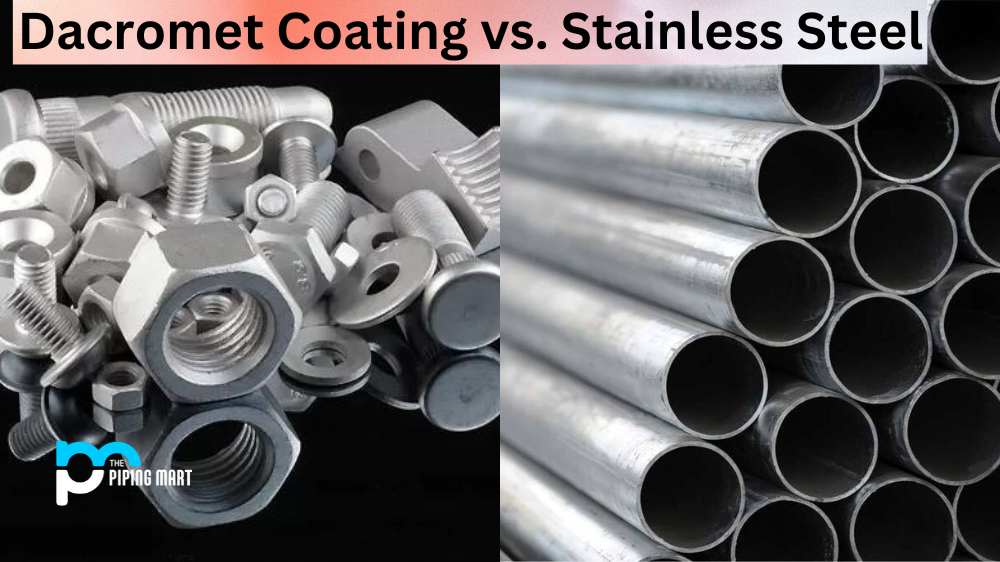When it comes to metal coating, there are numerous options available. Two of the most popular are dacromet coating and stainless steel. Both offer unique advantages, but it’s important to understand the differences between them. In this blog post, we will discuss the differences between these two coatings and provide insight into which option might be best for your application.
Dacromet Coating
Dacromet coating is a zinc-based chemical conversion coating that is applied to metals like steel, aluminium, and titanium. It offers excellent corrosion protection and can be used in a variety of applications, including automotive, construction, agricultural machinery, and more. Additionally, dacromet-coated parts can withstand temperatures up to 800 degrees Fahrenheit without sacrificing performance or durability.
Stainless Steel
Stainless steel is an alloy made up of iron alloys such as chromium, nickel, molybdenum, etc. It is highly resistant to corrosion and rust due to its protective layer of chromium oxide on its surface. It comes in various grades depending on its composition and its intended use. For example, 304-grade stainless steel is typically used for food-grade applications, whereas 316-grade stainless steel is often used in marine environments due to its higher corrosion resistance properties.
Difference Between Dacromet Coating and Stainless Steel
Comparison
When comparing dacromet coating vs stainless steel, both offer excellent corrosion protection; however, there are several key differences that should be taken into consideration when choosing which one is right for you:
Cost
Dacromet coating tends to be more cost-effective than stainless steel as it requires fewer steps during the manufacturing process.
Durability
Stainless steel is more durable than dacromet coating as it can withstand extreme temperatures with less degradation over time compared to dacromet-coated parts, which have a maximum temperature limit of 800 degrees Fahrenheit before the performance begins to suffer.
Corrosion Resistance
Both offer excellent corrosion resistance; however, stainless steel tends to be slightly better due to having a thicker protective layer on its surface compared to dacromet-coated parts, which only have a thin layer of zinc-based chemical conversion coating applied during the manufacturing process.
Conclusion:
In conclusion, when considering whether dacromet coating or stainless steel is right for your application, you must take into consideration cost factors such as production costs as well as performance factors such as durability and corrosion resistance properties before making a final decision. Ultimately the choice depends on what type of environment your part will be exposed to, along with how much you are willing to pay upfront for materials and labour costs associated with each option. With this information in mind, you should now have all the necessary information needed to make an informed decision about which option will work best for your project needs!

A passionate metal industry expert and blogger. With over 5 years of experience in the field, Palak brings a wealth of knowledge and insight to her writing. Whether discussing the latest trends in the metal industry or sharing tips, she is dedicated to helping others succeed in the metal industry.




